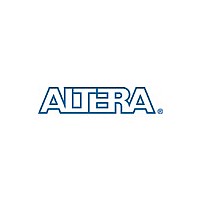EPCS64 Altera Corporation, EPCS64 Datasheet - Page 28

EPCS64
Manufacturer Part Number
EPCS64
Description
(EPCS1 - EPCS64) Serial Configuration Devices
Manufacturer
Altera Corporation
Datasheet
1.EPCS64.pdf
(32 pages)
Available stocks
Company
Part Number
Manufacturer
Quantity
Price
Part Number:
EPCS64N
Manufacturer:
ALTERA
Quantity:
20 000
Company:
Part Number:
EPCS64SI16N
Manufacturer:
ALTERA
Quantity:
1 290
Company:
Part Number:
EPCS64SI16N
Manufacturer:
ALTERA
Quantity:
4
Company:
Part Number:
EPCS64SI16N
Manufacturer:
ALTERA42
Quantity:
696
Part Number:
EPCS64SI16N
Manufacturer:
ALTERA
Quantity:
20 000
Programming & Configuration File Support
Programming &
Configuration
File Support
4–28
Configuration Handbook, Volume 2
f
f
The Quartus II design software provides programming support for serial
configuration devices. After selecting the serial configuration device, the
Quartus II software automatically generates the Programmer Object File
(.pof) to program the device. The software allows users to select the
appropriate serial configuration device density that most efficiently
stores the configuration data for a selected FPGA.
The serial configuration device can be programmed in-system by an
external microprocessor using SRunner. SRunner is a software driver
developed for embedded serial configuration device programming that
designers can customize to fit in different embedded systems. The
SRunner can read a Raw Programming Data file (.rpd) and write to the
serial configuration devices. The programming time is comparable to the
Quartus II software programming time.
For more information about SRunner, see the SRunner: An Embedded
Solution for Serial Configuration Device Programming White Paper and the
source code on the Altera web site (www.altera.com).
Serial configuration devices can be programmed using the APU with the
appropriate programming adapter (PLMSEPC-8 or PLMSEPC-16) via the
Quartus II software, USB Blaster, or the ByteBlaster II download cable via
the Quartus II software. In addition, many third-party programmers,
such as BP Microsystems and System General, offer programming
hardware that supports serial configuration devices.
During in-system programming of a serial configuration device via the
USB Blaster or ByteBlaster II download cable, the cable pulls nCONFIG
low to reset the FPGA and overrides the 10-kΩ pull-down resistor on the
FPGA’s nCE pin (see
interface pins (DATA, nCS, ASDI, and DCLK) to program the serial
configuration device. Once the programming is complete, the download
cable releases the serial configuration device’s four interface pins and the
FPGA’s nCE pin, and pulses nCONFIG to start configuration.
For more information on programming and configuration support, see
the following documents:
■
■
■
■
Altera Programming Hardware Data Sheet
Programming Hardware Manufacturers
USB Blaster USB Port Download Cable Development Tools Data Sheet
ByteBlaster II Parallel Port Download Cable Data Sheet
Core Version a.b.c variable
Figure
4–2). The download cable then uses the four
Altera Corporation
July 2004












